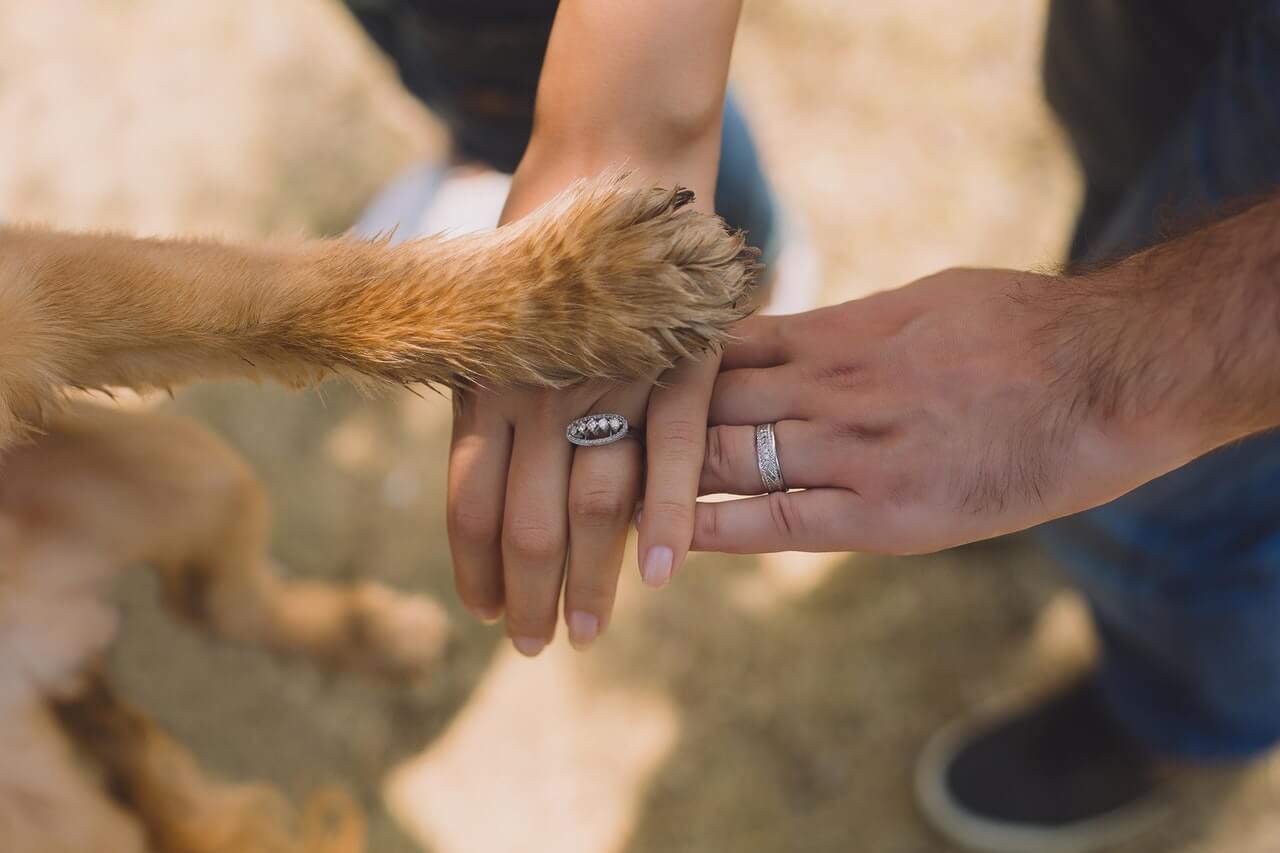2020-06-04

Dogs bring us a lot of joy in family, work, and life. They can familiarise themselves with humans in a natural way and quickly adapt to a new environment. This is one of the reasons why more and more individuals or families choose the dog as their first pet. Most dog owners would like to take their socialized furry friends with them wherever they go.
The frustrating fact, however, is that pets are still prohibited in many places, although you can guarantee that your dog is fully trained and behaves well. Almost all health facilities, such as clinics, hospitals and care centers usually require that only therapy dogs and service dogs are allowed access to ensure the health and safety of others. Therefore, if you want to bring your dog to these places, but do not have a disability, which is the most important requirement for a service dog handler, simply join the therapy dog team! To be a qualified therapy dog, your dog should meet the following qualifications.
In this article:
2. How do I get my dog to be a therapy dog?
4. What training does a therapy dog need?
5. Does a certified therapy dog need to wear a vest?
6. Can a therapy dog go anywhere?
What is a therapy dog?
A therapy dog is a dog that offers comfort and affection to people in hospitals, nursing homes, care centers, retirement communities, schools, libraries and other institutions. Therapy dogs differ from service dogs. Service dogs are tailored to someone who needs canine assistance and who live with the handler. However, a therapy dog can be a dog that is used for work in hospitals or just a domestic dog that has been individually trained to assist the owner.
Therapeutic impact: Science has shown that daily visits from therapy dogs are of great benefit for both physical and mental health. For example, the company of these dogs can increase patients’ levels of endorphins and oxytocin (the chemicals that help create a sense of happiness), lower blood pressure, regulate heart rate, and reduce anxiety or illness-related stress.
• For people with mobility issues, a therapy dog can improve their motor skills and joint mobility as well as assist with fine motor movement.
• For people with socialization problems, therapy dogs help them to rebuild their self-esteem by increasing communication and developing social skills.
• For someone with procrastination, therapy dogs can strengthen their eagerness to partake in activities and willingness to exercise.
• For children with learning impediments, a therapy dog can encourage them to study with other students at school.
How do I get my dog to be a therapy dog?
To get your own therapy dog, you should know the following:
1. Self-test your dog’s temperament and manners. A therapy dog should be friendly to people and positive about their work. A stressful or aggressive dog may not be able to stay in a crowd. If your dog enjoys being petted, touched, and hugged by different groups of people, he may be a good candidate for a therapy dog.
2. Therapy dogs should undergo proper training including basic obedience skills, socialization, how to give comfort to people, and so on. The training can vary depending on the needs of the handler. For example, a therapy dog for a kid should learn to get on well with children at school.
3. After your dog has completed all of the training, you and your dog should go through a test to check your dog’s manners and your handling skills. You will likely find a tester or observer at your location. The tests can take a few days and require several visits from medical professionals.
4. Once your dog passes all training and tests, he is part of a therapy dog team!

Therapy dog requirements
Although there is no law that defines the qualification of therapy dogs, a qualified therapy dog should meet certain requirements as it will be a special member in many care facilities with various groups.
1. Breed and size
Any breed or mixed dog breed in different sizes can become a therapy dog. However, some dog breeds that have an innate good temperament and high trainability would be more obedient and would improve the training efficiently.
In addition, a small dog is good for cuddling on your lap, but a large dog can get up to give you a warm hug or rest its head on the side of a bed. Common therapy dog breeds are Golden Retrievers, Labrador Retrievers, and Poodles.
2. Temperament
As mention above, an ideal therapy dog should have a certain temperament: happy, calm, friendly and affectionate towards strangers. What’s more, the dogs should be able to adapt quickly to different environments, sounds, smells, and equipment.
3. Age
Therapy dogs must be at least one year old to master basic commands and be mature enough to deal with all kinds of situations calmly.
4. Training
A qualified therapy dog should be well-socialized and well-trained. Therefore, the dog needs to go undergo appropriate training and master the required skills prior to formal visits. The handlers should also take part in the training to familiarise themselves with their furry partner.
5. Health requirements
As therapy dogs have to interact with many people and work in different environments, they should be strong and healthy enough to complete their tasks for their own and your safety. Normally, therapy dogs must meet certain health requirements, including:
• Up-to-date vaccinations
• Regular heartworm prevention
• Flea prevention
• Clean bill of health from your veterinarian
What training does a therapy dog need?
Therapy dog training is not as strict as what service dogs experience, but it is one of the foremost factors for an ideal therapy dog. If you are wondering whether you want to turn your household dog into a therapy dog, your pup should first undergo a basic therapy dog training program that will help a dog develop good manners, master social skills, and become familiar with different environments. Here is a guide to help your start the training better: Preparations for Training Your Puppy to Become a Therapy Dog
All training can be carried out by a professional trainer or by yourself. Here is part of the training:
• Socialize your dog with new people, animals, objects, and places.
• Basic commands such as sit, stay, down, and come.
• Creative training tricks: hug, kiss, and fetch.
• Train the necessary skills for therapy work such as loose leash walking, being petted by others, and lying on the side of people.
• Reduce distractions while they are working, such as noises, smells, and other dogs.
• Handler preparation: Therapy dog handlers should enroll in the training courses together with the dog, which can help your dog comply with your cues or words easily and quickly.
After training, it is recommended that your dog be sent to a professional organization that can evaluate if your dog is ready for therapy work, including
• If your dog is friendly and confident being in crowds
• If your dog meets the basic requirements of a therapy dog
• If your dog is comfortable being petted or touched by others
• If your dog is willing to initiatively interact with people but not jump up on others or equipment
• If your dog can cope with different situations without severe anxiety or stress
Does a certified therapy dog need to wear a vest?
If your pup has gone through all the training and testing, you could certify your furry friend as a volunteer therapy dog in local animal-assisted therapy groups. You could also register it as your personalized therapy dog through online organizations. Some facilities indicate that they only allow certified therapy dogs.
Once registration is complete, you can be ready for the first visit with your therapy helper.
Regarding the therapy dog vest, there is no legal requirement for a therapy dog to wear a vest, but a well-dressed therapy dog is trusted in public places. In addition, putting on a vest before embarking on a visit is a great way to tell your furry friend what is about to happen. This can help your pup to quickly switch to “work mode”.
Can a therapy dog go anywhere?
Therapy dogs are allowed in places where all dogs have access and in special places where therapy dog programs are offered, such as hospitals, schools, care centers, libraries, etc. Otherwise, therapy dogs are considered pets in other places and need to comply with their guidelines.
Unlike service dogs, qualified therapy dogs have no right to accompany their owners into government buildings, business premises, service providers, and modes of transport. This means that your therapy helper might be refused access to hotels, restaurants, stores, airports, etc. So it is best to ask the staff before taking your therapy dog to these public places.